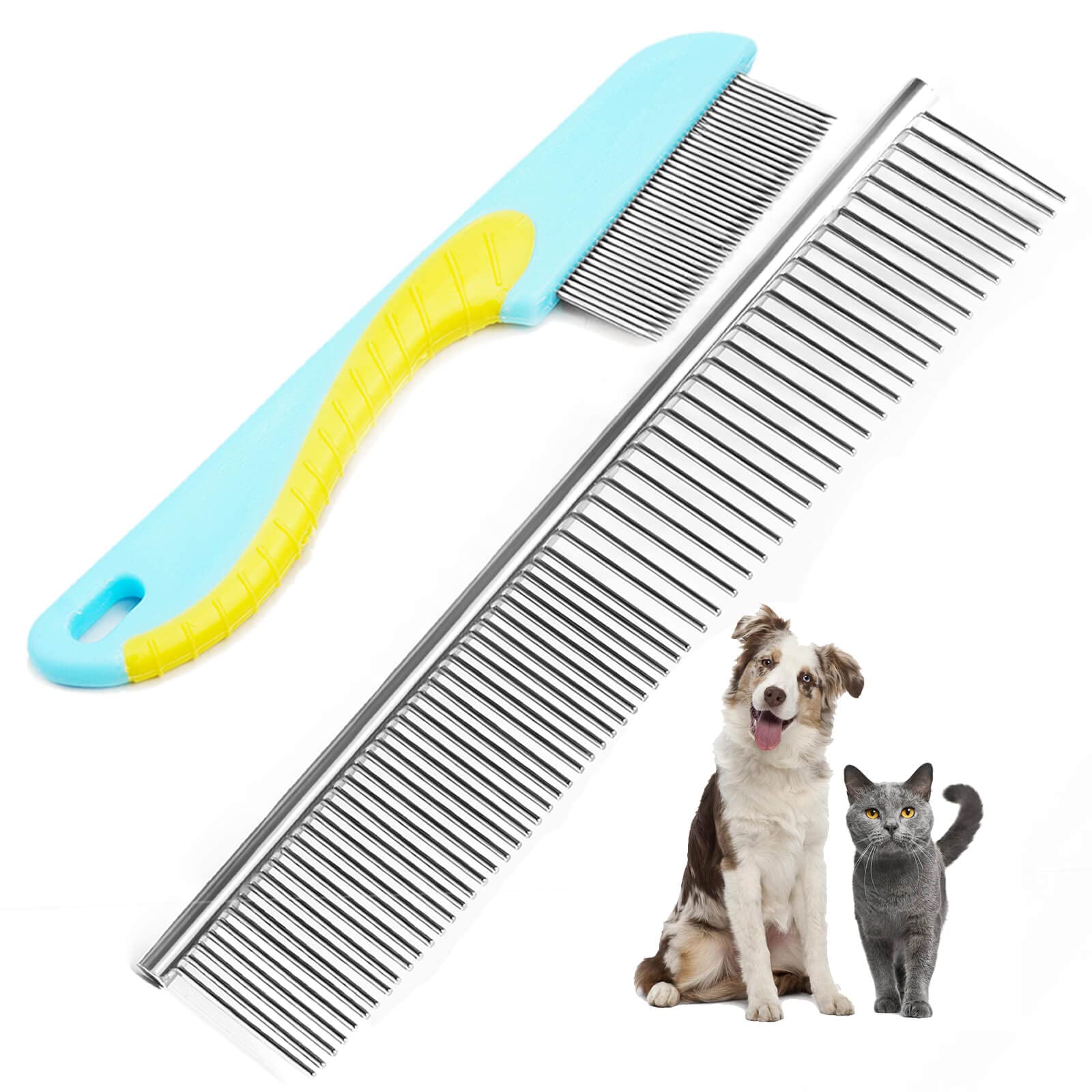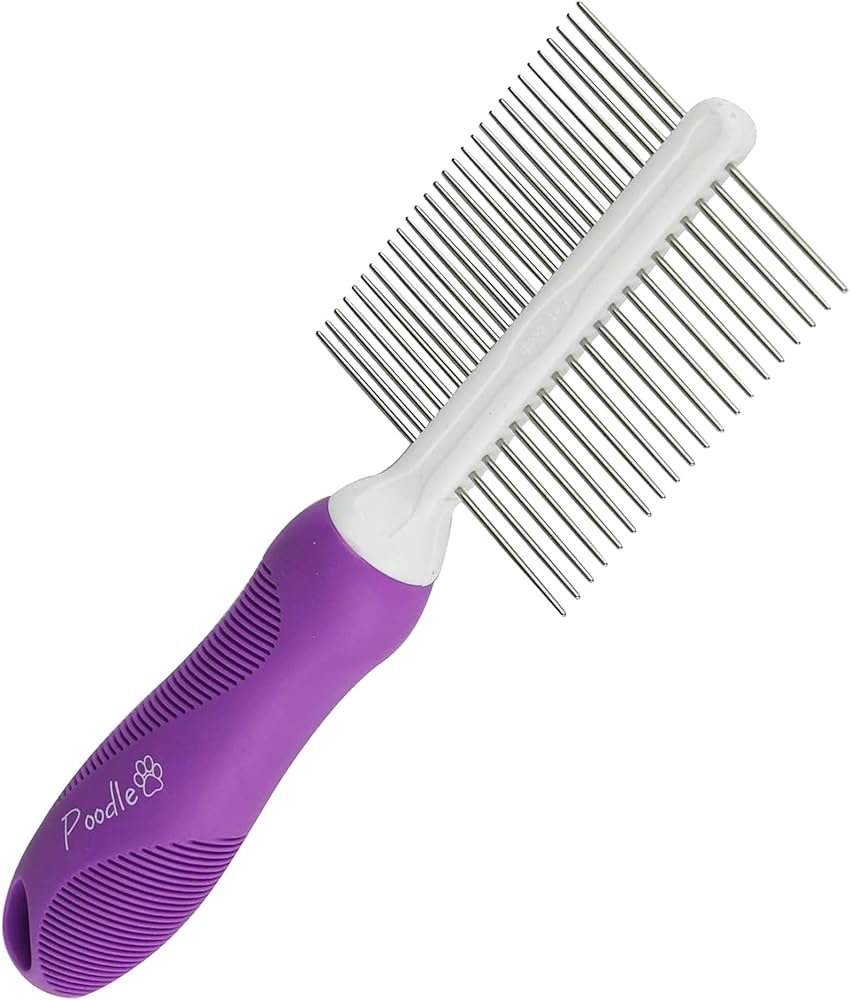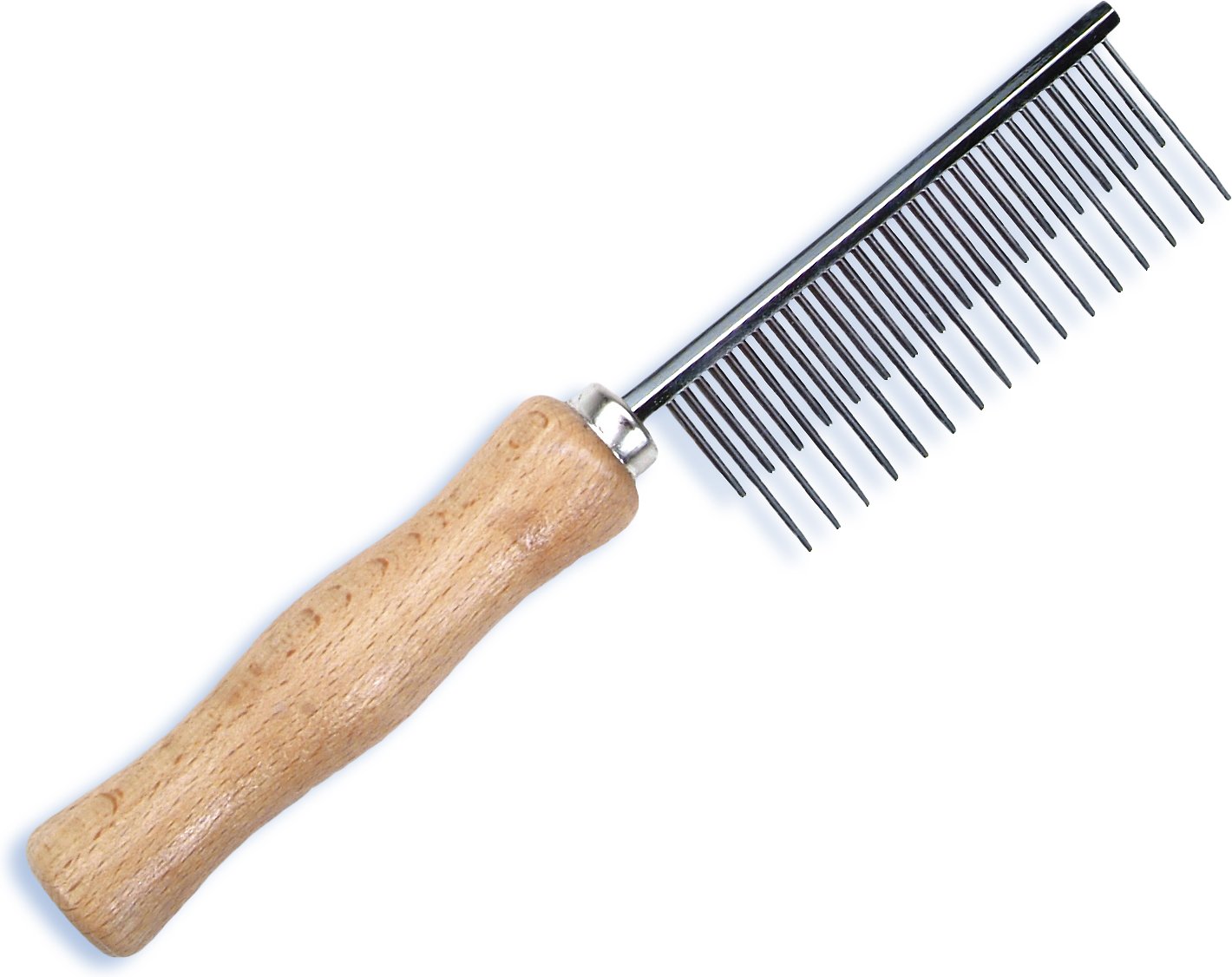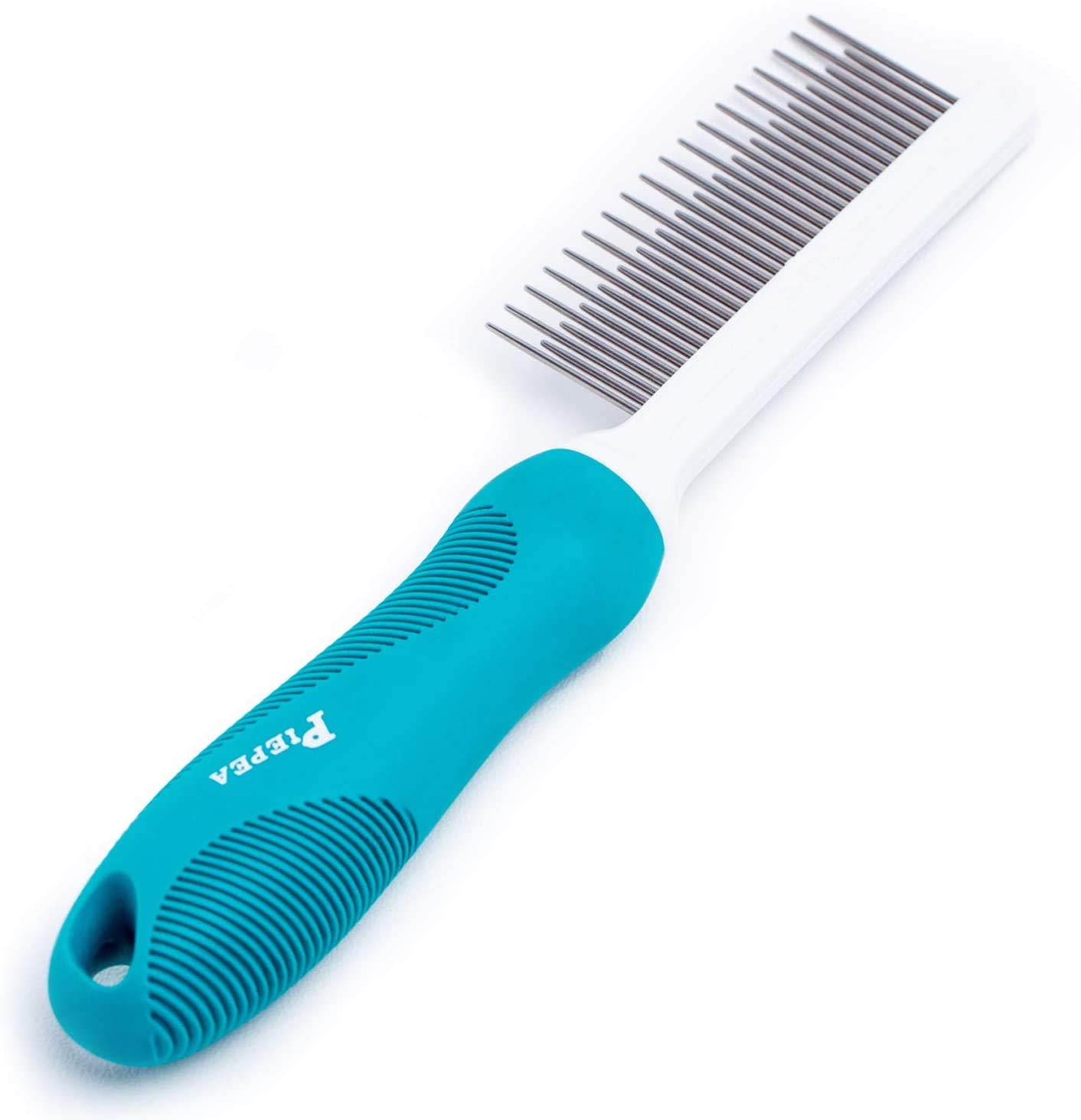
In the world of canine care, grooming plays a pivotal role in maintaining a healthy, happy, and well-groomed dog. Among the essential grooming tools, dog combs stand out as indispensable companions for pet parents, offering a variety of benefits for both the dog’s coat and overall well-being.
I. Introduction
A. The importance of grooming for canine companions
Regular grooming is not just about aesthetics; it’s a crucial aspect of canine health and well-being. Brushing and combing your dog’s coat helps remove loose hair, dirt, and debris, preventing mats, tangles, and skin irritation. It also promotes healthy skin circulation, distributes natural oils, and enhances the overall shine and condition of the coat.
B. The role of dog combs in maintaining a healthy coat
Dog combs are specifically designed to penetrate the coat, reaching down to the undercoat and gently removing loose hair, dead skin cells, and trapped debris. This not only keeps the coat clean and healthy but also helps prevent excessive shedding, which can be a major source of frustration for pet parents.
C. Unveiling the different types of dog combs and their uses
The world of dog combs offers a diverse range of options, each designed to address specific coat types and grooming needs. Understanding the different types of combs and their intended uses is essential for selecting the right tool for your canine companion.

II. Understanding the Needs of Different Dog Breeds
A. Considering coat type: long, short, double, or single
The type of coat your dog has plays a significant role in determining the type of comb that’s best suited for them. Long-haired breeds require combs with longer teeth to reach the undercoat, while short-haired breeds may benefit from combs with shorter teeth to avoid scratching the skin. Double-coated breeds have both a dense undercoat and a topcoat, requiring a combination of combs to address both layers effectively. Single-coated breeds have only one layer of fur, making a simple pin brush or slicker brush often sufficient.
B. Assessing coat texture: fine, coarse, curly, or straight
The texture of your dog’s coat also influences the choice of comb. Fine-haired breeds require combs with gentle, flexible teeth to avoid breakage, while coarse-haired breeds can handle sturdier teeth. Curly-haired breeds may benefit from combs designed to detangle and prevent mats, while straight-haired breeds may simply need a regular pin brush or slicker brush to maintain their coat.
C. Identifying specific grooming challenges for each breed
Certain breeds may have specific grooming challenges that require specialized combs. For instance, breeds prone to mats, such as Poodles or Golden Retrievers, may need a dematting comb with wide-spaced teeth to tackle tangles without causing discomfort. Breeds with dense undercoats, like Siberian Huskies or Alaskan Malamutes, may benefit from undercoat rakes to effectively remove loose undercoat hair.

III. Choosing the Right Dog Comb for Your Canine Companion
A. Demystifying the different types of dog combs:
1. Pin brushes: These versatile combs feature metal pins with rounded tips, ideal for everyday brushing of most coat types. They gently remove loose hair, detangle light mats, and distribute natural oils.
2. Slicker brushes: With densely packed wire bristles, slicker brushes excel at removing loose hair, especially from undercoats. They're particularly effective for double-coated breeds and can help prevent mats.
3. Undercoat rakes: Designed specifically for dense undercoats, undercoat rakes feature long, wide-spaced teeth that penetrate deep into the coat, effectively removing loose undercoat hair. They're essential for breeds like Siberian Huskies or Golden Retrievers.
4. Furminators: These innovative tools combine a stainless steel blade with fine grooming teeth, effectively removing loose hair and reducing shedding. They're particularly popular for heavy shedders like Labrador Retrievers or German Shepherds.
5. Dematting combs: With widely spaced teeth, dematting combs are specifically designed to tackle stubborn mats and tangles. They gently separate entangled hair without causing breakage or discomfort.
6. Flea combs: These specialized combs feature fine teeth that effectively remove fleas, ticks, and other pests from the coat. They're particularly useful for dogs with flea infestations or those who spend time outdoors.
B. Selecting the appropriate comb size and tooth spacing
The size and tooth spacing of the comb should be appropriate for the size and coat type of your dog. For small dogs or breeds with fine hair, choose a comb with smaller teeth and a narrower head. For larger dogs or breeds with coarser hair, opt for a comb with wider teeth and a larger head.

IV. Mastering the Art of Dog Brushing
A. Brushing frequency: daily, weekly, or as needed
The frequency of brushing depends on your dog’s breed, coat type, and shedding habits. Long-haired or double-coated breeds may require daily brushing, while short-haired breeds may only need weekly brushing. During shedding seasons, more frequent brushing may be necessary to manage loose hair.
B. Preparing your dog for brushing: creating a calm environment
Turn brushing into a positive experience for your dog. Choose a quiet, well-lit location and create a calm atmosphere. Offer verbal praise and treats throughout the process to make brushing an enjoyable bonding experience.
C. Brushing technique: following the direction of hair growth
Always brush your dog’s coat in the direction of hair growth, starting from the head and working your way down the body. Brush gently, section by section, to avoid pulling or snagging the fur. Pay close attention to areas prone to matting, such as behind the ears, under the legs, and around the tail.
D. Addressing specific grooming challenges: mats, tangles, and shedding
For minor mats, a dematting comb can help gently separate the tangled hair. For severe mats, it may be best to consult a professional groomer. Regular brushing with a slicker brush or undercoat rake can help prevent mats from forming in the first place. Shedding can be managed with regular brushing and the use of a Furminator or other deshedding tool.

V. Additional Grooming Tips for a Healthy and Happy Dog
A. Regular bathing: using a dog-specific shampoo and conditioner
Regular bathing, typically every 4-6 weeks, removes dirt, allergens, and dead skin cells. Use a gentle, dog-specific shampoo and conditioner formulated for your dog’s coat type. Avoid using human shampoo, as it can dry out your dog’s skin.
B. Nail trimming: preventing overgrown nails and discomfort
Overgrown nails can be uncomfortable for your dog and can even cause pain or difficulty walking. Regularly trim your dog’s nails using dog nail clippers or a grinder. If you’re unsure about trimming nails yourself, seek assistance from a veterinarian or professional groomer.
C. Ear cleaning: maintaining ear hygiene to prevent infections
Regular ear cleaning helps prevent ear infections, especially for breeds with floppy ears. Use a gentle ear cleaning solution recommended by your veterinarian and clean your dog’s ears according to their specific needs.
D. Dental care: regular brushing and professional cleanings
Just like humans, dogs require dental care to maintain healthy teeth and gums. Brush your dog’s teeth daily with a dog-specific toothpaste and toothbrush. Schedule regular professional dental cleanings with your veterinarian to prevent dental disease.
VI. The Benefits of Regular Dog Grooming
A. Maintaining a healthy and shiny coat
Regular grooming not only keeps your dog looking their best but also promotes a healthy and shiny coat. Brushing removes dirt, debris, and dead skin cells, allowing natural oils to distribute and nourish the coat.
B. Reducing shedding and preventing hairballs
Regular brushing helps manage shedding by removing loose hair before it falls out and ends up on your furniture or clothes. This can be particularly beneficial for heavy shedders. Brushing also helps prevent hairballs in long-haired breeds.
C. Identifying and addressing skin issues early on
Brushing your dog regularly allows you to inspect their skin for any signs of irritation, lumps, or abnormalities. Early detection of skin problems can lead to prompt treatment and prevent more serious issues from developing.
D. Strengthening the bond between you and your canine companion
Grooming time can be a wonderful opportunity to bond with your dog. The gentle touch and positive reinforcement associated with brushing can strengthen the trust and connection between you and your furry friend.
VII. Safety Precautions When Grooming Your Dog
A. Avoiding sensitive areas: eyes, nose, and genitals
Be careful to avoid sensitive areas like the eyes, nose, and genitals when brushing your dog. Use a soft cloth or cotton ball to clean these areas gently.
B. Using gentle brushing motions to prevent pain or discomfort
Always brush your dog gently, avoiding harsh strokes or pulling on tangled fur. If your dog seems uncomfortable or in pain, stop brushing and consult a professional groomer for assistance.
C. Addressing any signs of irritation or discomfort promptly
If your dog exhibits any signs of irritation, such as redness, itching, or yelping, stop brushing immediately. Consult your veterinarian to determine the cause of the discomfort and seek appropriate treatment.